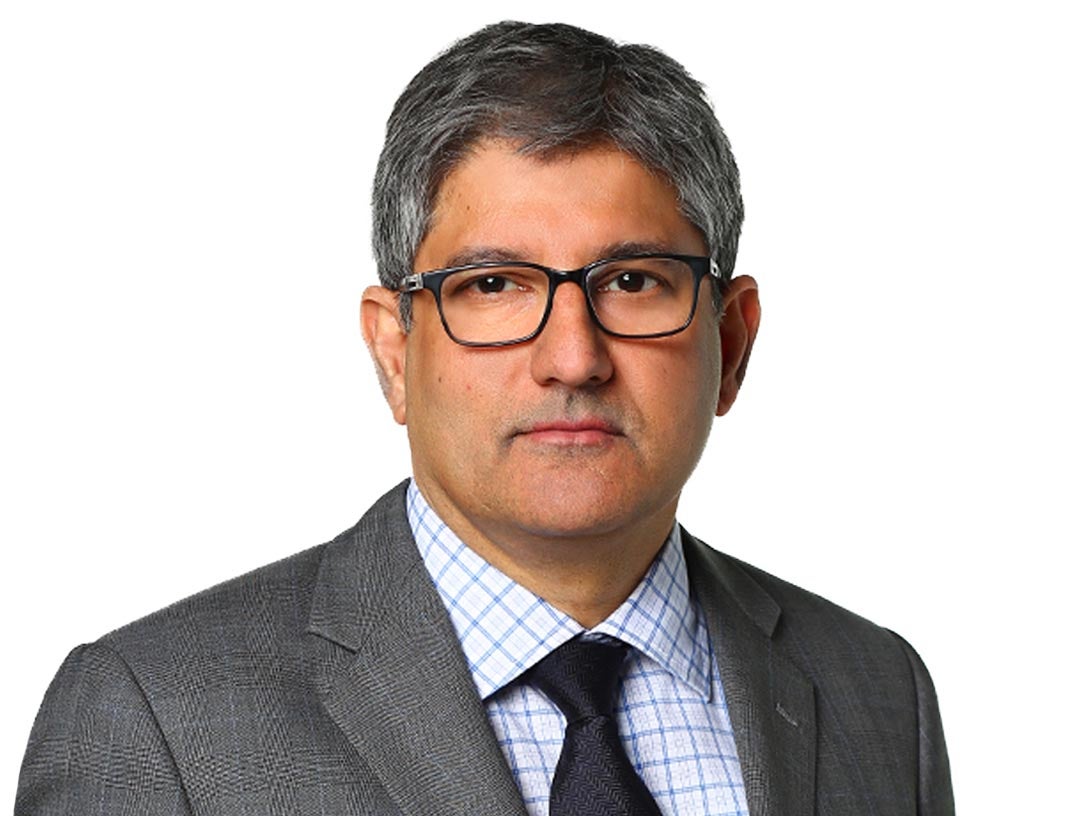Global regime shift: unlocking alpha abroad

Significant changes are underway in the global economy. Shifts in trade policy, security frameworks, and economic alliances are generating divergent economic outcomes as well as fiscal and monetary policy responses. These shifts are not only reshaping the global economic landscape, but also creating a robust opportunity set for generating excess return in global fixed income markets.
In the US, we expect fiscal policy to remain loose, coupled with increasingly accom-modative monetary policy, resulting in positive US growth and lingering above-trend inflation. Outside the US, we anticipate fiscal and monetary loosening to lead to an uptick in growth, without the offsetting concerns of higher inflation.
We expect the market impacts of this macroeconomic backdrop to be a weaker US dollar, a higher term premium in rates and a neutral outcome in credit. In a world of heightened uncertainty, we believe this environment represents a tremendous opportunity for investors to re-examine their portfolios for potential concentration risks and to consider diversifying internationally.
Macroeconomic backdrop
Global regime change: US policy shifts are transforming trade, security and economic alliances
The US administration’s unprecedented agenda to address built-up imbalances in such areas as trade, security and investment is upending the long-standing status quo and reordering the global economic landscape. In seeking a more balanced outcome, the administration has directed trade and tariff policy at addressing the US’s USD1.2 trillion deficit in traded goods, while also looking for ways to re-shore several industries to the US to create jobs and secure supply chains. We expect the effects of these policy priorities to reverberate for years. Despite the rapid change and associated disruptions, our core view remains that the global economy will avoid a recession.
Estimates indicate the US government stands to collect up to USD300 billion from tariff revenue this year.1 As consumer goods make up roughly 27% of US imports, the consumer impact of tariffs is often the most cited as being akin to a regressive tax.2 As tariffs target goods coming into the US, tariffs may disproportionately burden lower-tier earners who typically spend a larger portion of their budget on goods. However, tariffs equally impact US businesses, with capital goods comprising 26% of US imports.3 We believe that tariffs will likely weaken both consumer and business demand, and recent PPI and CPI data have started to confirm that the tariff burden is increasingly visible in higher prices.
For the US economy, labor market changes due to the shift in immigration policy could be an additional headwind, as the economy slows amid both lower demand for labor and a supply side shock to labor. Nevertheless, the impact of these changes is tempered by an extraordinary investment cycle in AI-related datacenters and computing equipment.
While this investment is likely sufficient to keep the US economy out of recession, it may increasingly “feel” like one in non-tech related sectors.
Beyond global trade dynamics, security alliances are also being rewritten. In bilateral trade deals, the US is stressing the importance of defense spending and requiring allies to make meaningful increases. In Europe, for example, the resulting fiscal stimulus supporting military and front-loaded infrastructure spending should provide a growth buffer, supporting economic activity for the next few years. Greater fragmentation in global security and trade alliances could lead to more persistent market volatility, while also incentivizing countries to prioritize their own domestic policies more independently.
Divergent cycles: Economic outcomes and policy responses globally are no longer synchronized
The current global economic cycle reflects economic and policy responses that are not synchronized in timing or magnitude, leading to country outcomes which are likely to be divergent as well.
- US
In the US, the current policy mix on trade and immigration is offset by stable to looser fiscal policy (via the One Big Beautiful Bill), looser monetary policy, and strong AI-related capex spending. These economic policies should all support growth, but come with inflationary risks. Outside the US, tariffs are unlikely to spur inflation but will likely act as a headwind to economic growth, as it is difficult to quickly or easily replace US demand. As a result, there is greater room for countries outside the US to support their domestic demand by lowering interest rates. In this scenario, we expect fixed income markets outside the US are likely to perform better.
In our view, the current mix of US policies allows the Federal Reserve (Fed) to deliver an additional 50 basis points of easing this year and normalize the policy rate closer to its neutral level (which we estimate to be 2.75% – 3.50%). As seen in recent labor market data, the US economy appears to be slowing through both lower demand and a supply side shock to labor due to reduced immigration. As inflation will likely remain elevated, the Fed will likely have to make a forward-looking assessment of whether tariffs are likely to lead to a one-time price level adjustment or could become embedded and start a new inflationary cycle. It seems clear the Fed is prioritizing addressing downside growth risks over inflationary concerns and is willing to deliver policy normalization cuts. While we believe the Fed will move rates toward neutral, we also see a risk of additional easing, given a new Fed Chair and an evolving list of Board Governors in 2026.
- Europe
In Europe, economic outcomes have surprised to the upside. We continue to believe that Europe’s strategic response to US tariffs and its subsequent fiscal expansion indicates that it will post better than expected economic outcomes and avoid a recession. We believe the European Central Bank (ECB) is at or close to the end of its cutting cycle. Growth in real wages (0.9% growth in real disposable income expected in 2025), a stable unemployment rate, along with fiscal expansion (most notably in Germany), and looser money policy (100 basis points of cuts delivered in 2025) should be supportive of a growth rebound.4 In contrast to the US, European inflation remains at target, with the ECB forecasting 2.1% inflation in 2025 and 1.7% in 2026.5
- Japan
As an outlier, we expect the Bank of Japan (BOJ) to finally tighten monetary policy more meaningfully, versus the cumulative 60 basis points of hikes delivered in the last 18 months after being in negative territory since 2016. Japan faces a myriad of difficult policy choices. The primary source of inflation in Japan is a weak currency, which is negatively impacted by the BOJ’s reluctance to hike rates, due to the central government’s level of indebtedness and backdrop of broader global uncertainty. The longer the BOJ delays rate hikes, the worse the mix becomes between a weaker yen and high long-term yields. We believe the Japanese economy is not very interest rate sensitive and that markets will force the BOJ to normalize policy in line with inflation, which is running significantly above the BOJ’s 2% target.
- Emerging markets
The picture is more mixed in China, where the policy response thus far has been anemic, and where we expect the growth/inflation outlook to worsen materially. Similarly, in countries that are relatively closed economies, like India or Brazil, we expect domestic developments to drive policy, not external factors. Emerging market central banks that have the most room to ease policy in this environment are Brazil and Mexico.
Shifting dollar dynamics: Drivers of a weaker dollar may evolve, but we expect the weaking trend to continue
Strong US economic performance and resulting strong equity outperformance drew capital into the US over the past decade, leading to sharp US dollar appreciation. Foreign investors have benefited from holding US assets, either unhedged or partially hedged, as both the underlying asset and the dollar appreciated. Consequently, investors outside the US currently hold a large stock of dollar assets, while investors inside the US hold relatively few assets abroad. We believe this dynamic is beginning to shift. Foreign investors are scaling back demand for US assets, and by extension the US dollar. This backdrop supports global fixed income as an asset class and the case for investors to diversify portfolios internationally.
We have started to see this flow dynamic in countries with significant external asset positions, such as Taiwan. We expect this shift in flows to broaden, given the size of positions: the US’s negative net international investment position is nearly USD30 trillion, which equates to the aggregate surplus held by other countries.6 Given the difficulty in moving out of such large exposures, we would expect global investment to be diversified away from the US at the margin over time, allowing foreign currencies to appreciate to their fair values.
Our bearish dollar view of the last 12 months remains intact, and its driving forces have evolved with the evolution of US policy and economic data. In addition to the large overhang of US assets, we believe additional drivers of dollar weakness will be:
- High starting valuations of the dollar on a real and nominal historical basis
- Tariffs and slower growth of global trade overall, with increased bilateral trade in non-US dollars
- Looser US fiscal and monetary policy
- Greater incentive to deploy savings locally in an economically fragmenting, multipolar world
The large over-allocation to US assets grew over a prolonged period of time and led asset owners in the US and the rest of the world to increase their exposure to US equities, US credit, and US Treasuries. At this point, global investors now have the following options: (1) hedge their US dollar exposures, (2) reinvest the next marginal dollar in their home country assets, (3) sell dollar assets, or (4) do nothing. We expect to primarily see a combination of (1) and (2), with no broad-based liquidation of US assets. We expect this to be a theme that dominates markets for the next several years, resulting in a further 10 – 15% decline in the dollar.
Investment implications
Active opportunities for alpha generation
We believe heightened global uncertainty combined with divergent growth, inflation, and policy outcomes present greater opportunities to generate alpha and a greater need for active management. We believe considering a wider opportunity set beyond a single market like the US is inherently beneficial in driving excess return because of the many opportunities to choose from across interest rates, yield curves, and relative country positions. The dominance of US markets over the past decade has overshadowed other market opportunities, but given the economic and policy divergences we see developing globally, we believe the non-US opportunity set is especially ripe.
We see the most compelling opportunities in foreign currency markets. We see compelling yield curve trade opportunities in many markets globally, but remain neutral on outright duration outside of select emerging market countries that offer high real interest rates. We remain neutral on credit where we see less opportunity for excess return, given historically tight spread levels.
Steeper yield curves offer potential opportunities
When it comes to our rates view, our neutral view on duration is anchored in US and European markets, which are already pricing in central bank moves toward terminal rates. This neutral view is tempered by a once-in-a-cycle opportunity to generate excess return from yield curve trades. While there could be directional opportunities in several markets, such as Brazil, Mexico, the UK, and India from the long side and Japan from the short side, the moves are still likely to be smaller than historical moves. Only in Japan, where we could get a full hiking cycle, and Brazil, where we could get a full cutting cycle, do we see significant directional opportunities.
When it comes to yield curve positioning, yield curves in most developed and emerging markets do not reflect actual economic and market conditions, in our view. Given the uncertainty in both inflation and growth outcomes, with worsening fiscal dynamics globally (except in emerging markets) we expect yield curves to become materially steeper over time. We believe this steepness will result from both lower front-end rates and higher long-end rates.
Ultimately, a larger number of markets with diverging yield curves enables investors to construct a more efficient portfolio than by simply (or even predominantly) focusing on a single market like the US.
Dollar diversification and differentiation
In our view, the macroeconomic backdrop that has driven year-to-date dollar weakness is here to stay. Given a backdrop where global investors have been exceedingly overweight US assets in isolation for years, we believe now is the opportunity to diversify. Optimal strategies in the current environment are those that will earn excess return from the normalization of currency valuations in countries with large unhedged international investment positions and currencies that offer high real rates of carry.
Given that the implied volatility in foreign exchange markets is fair to cheap, in our view, we favor extracting risk premia from higher volatility currencies versus a select basket of low volatility/low yielding currencies. We favor owning both emerging market and developed market currencies. Currently we are focused on the euro, Japanese yen, Brazilian real, and Mexican peso. Regionally, we believe Asia has the most room to catch up and participate in currency appreciation.
A regime shift worth positioning for
US policy changes are transforming the landscape of global trade, security, and economic interdependence, creating a divergent world where economic outcomes and policy responses are not synchronized in timing or magnitude. We see robust opportunities to generate alpha in current markets and expect further dollar weakness, steeper global yield curves, and select credit opportunities. This new global regime suggests that the US dollar will continue to weaken meaningfully in the coming years, which we believe presents a tremendous opportunity for investors to diversify internationally.
With contributions from Carla Cricco-Lizza (Senior Product Manager).
Investment risks
The value of investments and any income will fluctuate (this may partly be the result of exchange rate fluctuations) and investors may not get back the full amount invested.
Fixed-income investments are subject to credit risk of the issuer and the effects of changing interest rates. Interest rate risk refers to the risk that bond prices generally fall as interest rates rise and vice versa. An issuer may be unable to meet interest and/or principal payments, thereby causing its instruments to decrease in value and lowering the issuer’s credit rating.







